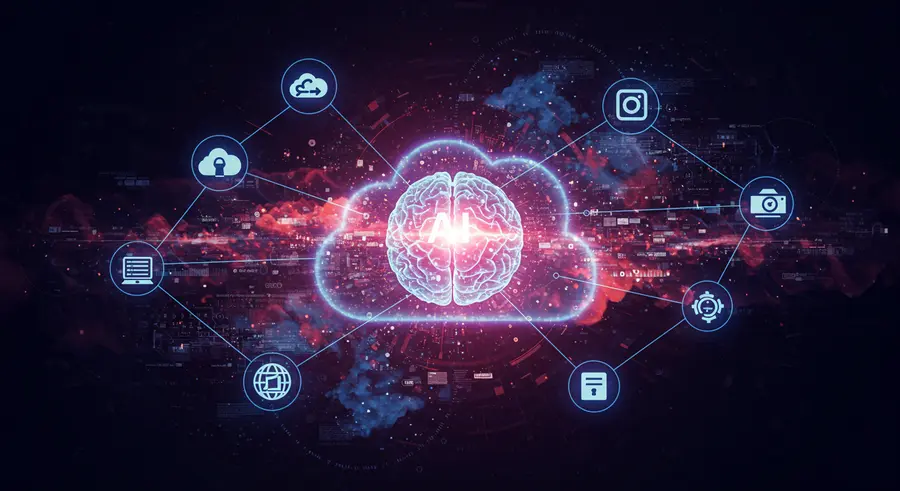Appearance

Welcome, cloud adventurers! 🚀 In today's interconnected digital landscape, organizations are increasingly adopting hybrid and multi-cloud strategies. While this offers unparalleled flexibility, scalability, and resilience, it also introduces a significant level of complexity, especially when it comes to management and security. But what if artificial intelligence (AI) could be the key to unlocking the true potential of these environments? Let's dive deep into how AI-driven orchestration and advanced security measures are revolutionizing hybrid multi-cloud management.
The Hybrid Multi-Cloud Maze: A Quick Recap 🧩
Before we explore the AI revolution, let's briefly touch upon what hybrid and multi-cloud mean:
- Hybrid Cloud: A blend of on-premises infrastructure (private cloud) and public cloud services, working together as a single, unified environment. Think of it as having your own secure, private office connected seamlessly to a vast, shared co-working space.
- Multi-Cloud: Utilizing multiple public cloud services from different providers (e.g., AWS, Azure, Google Cloud) to leverage their unique strengths, avoid vendor lock-in, and enhance disaster recovery capabilities. This is like having specialized tools from different vendors for specific tasks.
While both offer immense advantages like cost optimization, improved disaster recovery, and regulatory compliance, managing resources, workloads, and security across disparate environments can become a formidable challenge. This is where AI steps in as a game-changer!
AI-Driven Orchestration: The Intelligent Conductor 🧠🎶
Imagine an intelligent conductor overseeing a massive, complex orchestra, ensuring every instrument plays in perfect harmony. That's essentially what AI-driven orchestration does for your hybrid multi-cloud environment.
AI algorithms analyze vast amounts of data from across your cloud infrastructure to:
- Automate Resource Allocation: Dynamically allocate and deallocate resources based on real-time demand, optimizing performance and cost. No more manual scaling!
- Workload Balancing: Intelligently distribute workloads across different clouds and on-premises environments to prevent bottlenecks and ensure optimal performance. This is crucial for maintaining high availability and responsiveness.
- Predictive Scaling: Foresee future resource needs based on historical data and patterns, allowing for proactive scaling before demand spikes. This helps in avoiding performance degradation and ensuring a smooth user experience.
- Cost Optimization: Identify inefficiencies and suggest cost-saving measures by optimizing resource utilization, identifying idle resources, and recommending suitable pricing models. AI can be your FinOps superpower!
- Self-Healing Capabilities: Detect anomalies and potential issues, and in many cases, automatically resolve them before they impact service availability. This significantly reduces downtime and operational overhead.
- Unified Visibility & Management: Provide a "single pane of glass" view across all your cloud environments, simplifying monitoring, governance, and compliance.
Consider an e-commerce company that uses AWS for its website, Google Cloud for real-time analytics, and Azure for AI-powered product recommendations. An AI-driven orchestration platform could seamlessly manage workload distribution during peak shopping seasons, ensuring all services scale efficiently, costs are optimized, and security policies are consistently applied across all three clouds.
Advanced Security: Fortifying Your Multi-Cloud Frontier 🛡️🔒
The distributed nature of hybrid multi-cloud environments expands the attack surface, making security a paramount concern. AI is transforming cloud security by enabling:
- Proactive Threat Detection: AI models analyze network traffic, user behavior, and system logs in real-time to identify anomalous patterns indicative of potential threats, often before they escalate. This goes beyond traditional signature-based detection.
- Automated Incident Response: Upon detecting a threat, AI can trigger automated responses, such as isolating compromised resources, blocking malicious IP addresses, or enforcing new security policies, significantly reducing response times.
- Vulnerability Management: Continuously scan for vulnerabilities across your entire hybrid multi-cloud infrastructure and prioritize remediation based on risk assessment.
- Identity and Access Management (IAM) Enhancement: AI can detect unusual access patterns or suspicious login attempts, flagging potential compromises in user accounts.
- Zero-Trust Security Models: Reinforce zero-trust principles by continuously verifying every user and device, regardless of their location, and applying the principle of least privilege. AI helps in enforcing these policies dynamically.
- Compliance and Governance: Automate compliance checks and policy enforcement across diverse cloud environments, ensuring adherence to regulatory requirements.
Imagine a scenario where an AI security system detects an unusual access attempt to sensitive data hosted on a private cloud, while simultaneously noticing strange outbound traffic from a public cloud instance. The AI can correlate these events, identify it as a coordinated attack, and automatically isolate the affected resources, preventing data exfiltration.
Real-World Impact and Future Trends 🌟
The integration of AI into hybrid multi-cloud management is not just theoretical; it's already making a significant impact:
- Reduced Operational Complexity: By automating routine tasks and providing intelligent insights, AI frees up IT teams to focus on strategic initiatives rather than firefighting.
- Enhanced Business Agility: Organizations can deploy applications faster, scale more efficiently, and adapt to changing market demands with greater ease.
- Improved Cost Efficiency: Intelligent resource optimization and predictive scaling lead to substantial cost savings.
- Stronger Security Posture: Proactive threat detection and automated responses significantly reduce the risk of security breaches.
Looking ahead, we can expect even more sophisticated AI capabilities, including:
- Self-Aware and Self-Optimizing Clouds: Cloud environments that can learn, adapt, and optimize themselves with minimal human intervention.
- AI-Powered DevSecOps: Deeper integration of AI into the entire software development lifecycle, ensuring security is baked in from the start.
- Edge AI Integration: AI processing moving closer to data sources at the edge, further enhancing real-time insights and autonomous operations.
Learn More! 📚
To deepen your understanding of managing complex cloud environments, check out our existing resource on Navigating Hybrid Multi-Cloud Complexity.
Conclusion ✨
The journey into hybrid multi-cloud environments can be challenging, but with AI as your co-pilot, the path becomes clearer, more efficient, and significantly more secure. By embracing AI-driven orchestration and advanced security, organizations can truly harness the full power of their diverse cloud landscapes, paving the way for innovation, resilience, and unparalleled digital transformation.
Are you ready to unleash the intelligent future of your cloud? Let us know your thoughts in the comments! 👇